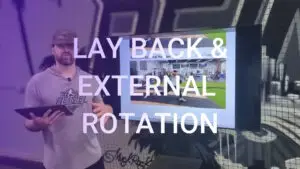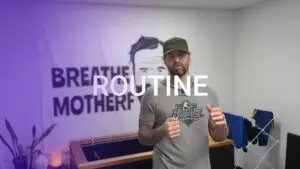
Layback & External Rotation Strength
Your arm acts like a catapult when throwing a baseball and it’s in full external rotation when the catapult is cocked all the way back.
We get a lot of questions about changing mechanics as if there’s some sort of secret mechanical adjustment that will unlock MLB-quality pitches. Same goes with hitters. They think that if they make one tweak that they’ll be hitting bombs over the Green Monster on a constant basis.
But let’s get something straight — mechanics are just one piece of the velocity pie.
It’s an important piece, for sure, but your mechanics might not need any help after you get through a series of high-intent throws. An athlete’s body tends to find the proper mechanics to unleash max velocity without thinking.
And a lot of important mechanical checkpoints are achieved in the weight room with increased strength. Your body needs to be strong in order to get into the proper positions to unleash max velocity and most new pitchers lack the strength to get into those positions. So, when they finally achieve that strength, their bodies generally find the strongest and most powerful positions on their own given that they are throwing at max effort on a personalized throwing program.
But here’s how we make adjustments for those of you who insist on drilling down on mechanics. We pattern movements in the weight room. By using weight and putting your body into different challenging positions, you can actually feel what the adjustment is supposed to feel like on the mound.
Joe shows you two exercises to get your body into the proper position on the mound depending on your body type. If you’re posterior dominant and put most of your weight into your glute and hamstring coming down the hill, then you’ll be performing the pistol squat and single leg RDL. If you break your knee out over your two to put your weight into your quad while balancing your body with the ball behind your body, then you’ll be doing a single-leg squat with a single leg cable row and a safety squat bar single-leg slide lunge.
Here’s how to do ’em.

Your arm acts like a catapult when throwing a baseball and it’s in full external rotation when the catapult is cocked all the way back.

Baseball presents many psychological challenges but none are more difficult than Process v Result. Process is what you can control. Process begins long before you

Joe Beimel pitched for 13 years in the Major Leagues and his career really took off, establishing him as a mainstay in The Show, when
